The art of staining fabric tapes Chibori came from Japan and liked many masters. Such staining is multicolored, with Japanese translates as "node", it can be obtained, folding the fabric correctly. Ribbons that are made in chibori technique have found their use in creating jewelry: it can be an elegant necklace or gentle earrings, bright and motley bracelets. In this article we will tell you how to make chibori technology with your own hands.
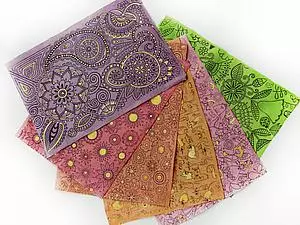
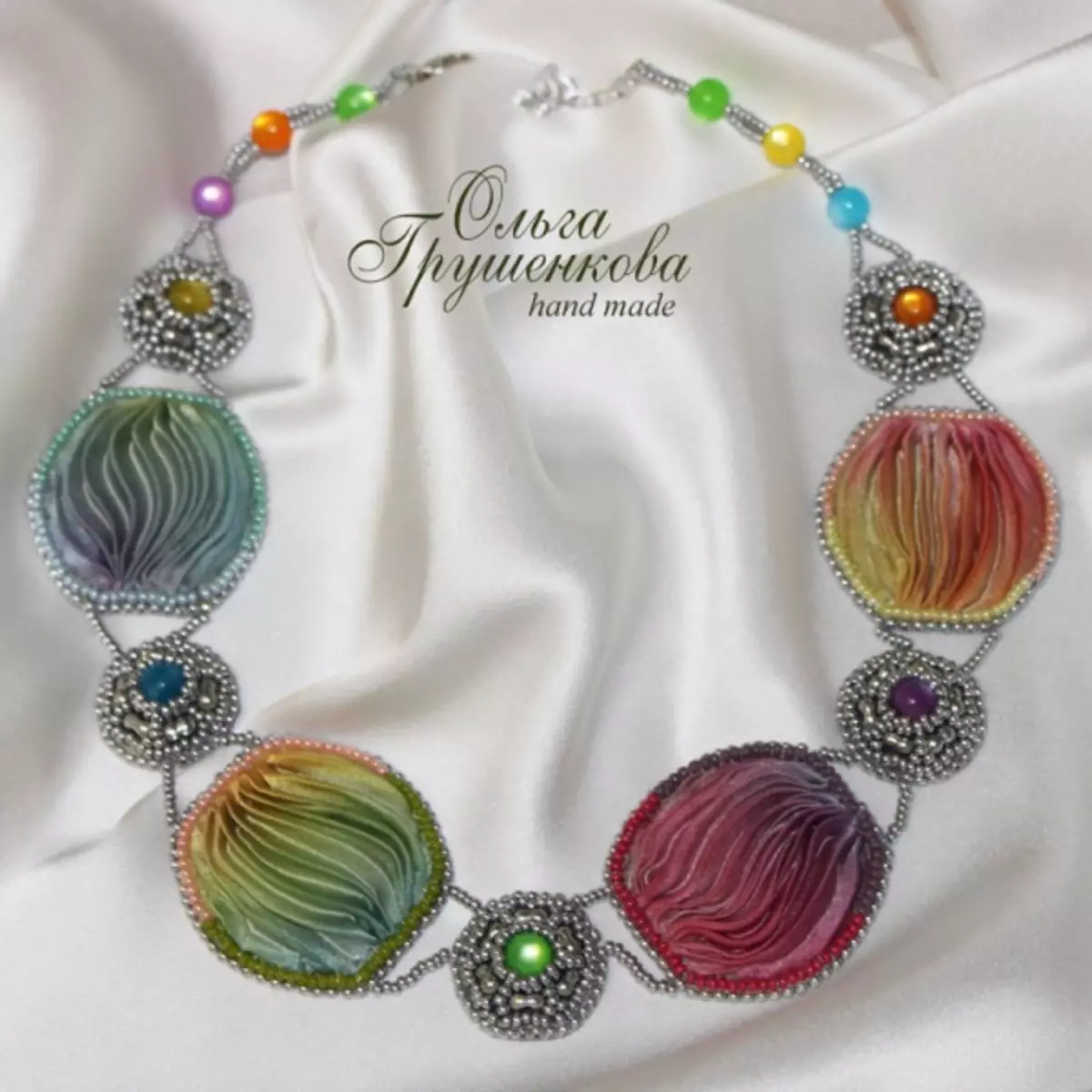
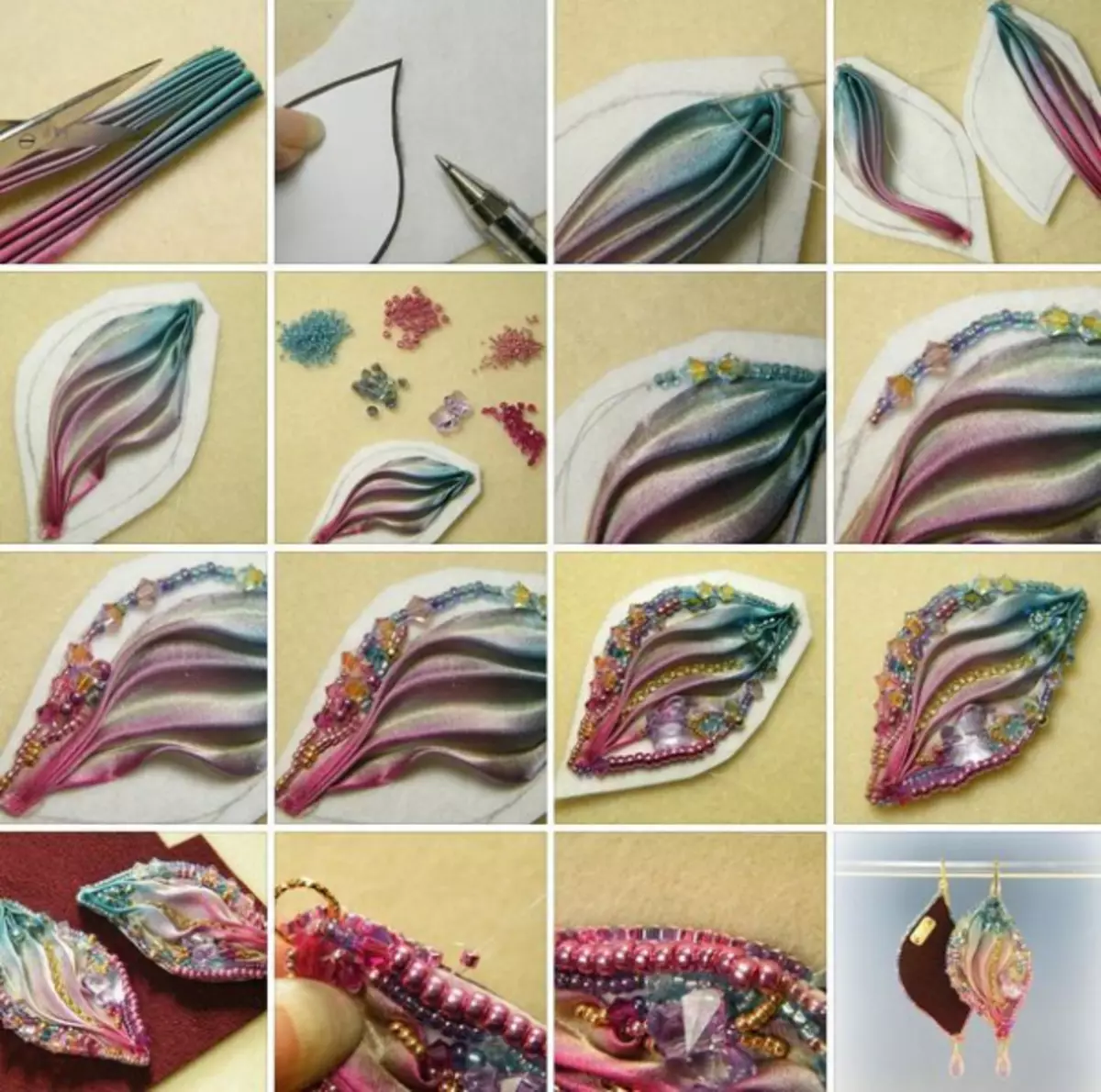
We start with simple
The process of using ribbons in the chibori technique can be traced on the example of the master class on the creation of earrings. This master class is filed in the photo material.
The lesson will require a base for embroidery - the LACY's Stiff Stuff ™ substrate, a tape of chibori, a pencil, a thread with a needle, bispers and beads.
Draw the form of earrings.
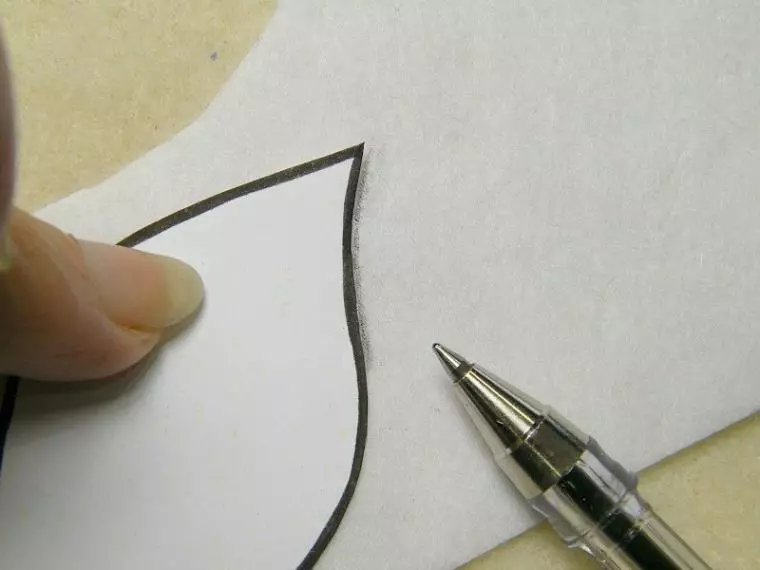
Cut the tape to the desired size.
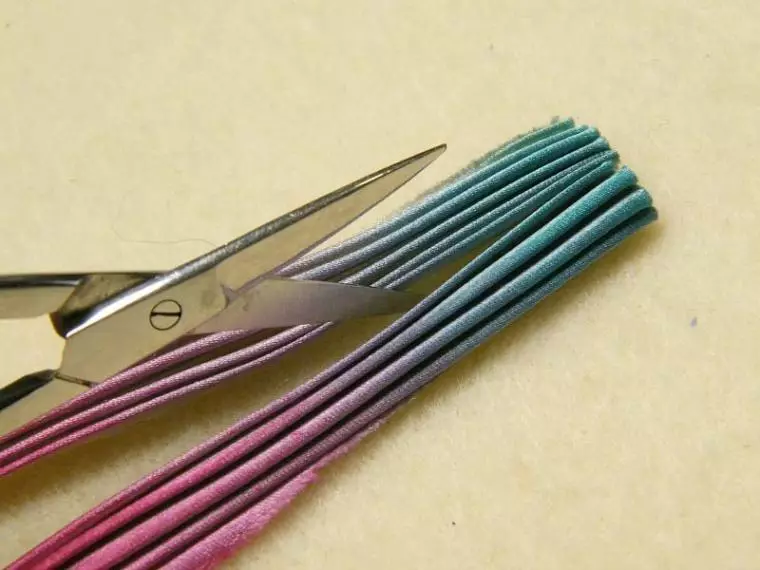
We sew or glue the ribbon to the substrate, carefully placing it throughout the perimeter of the earrings.
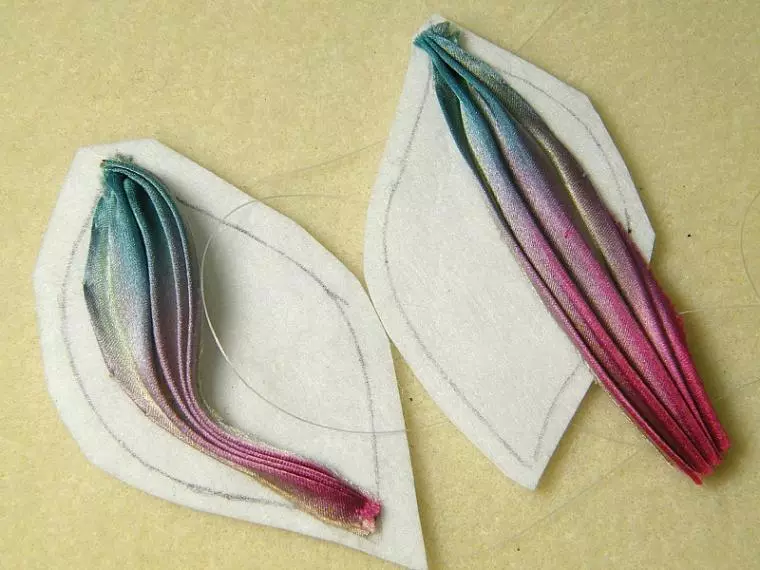
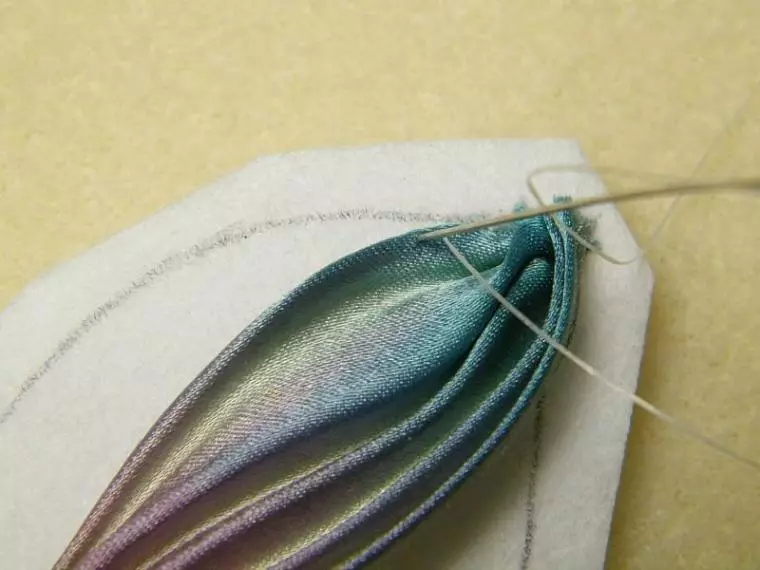
You can also sew edges.
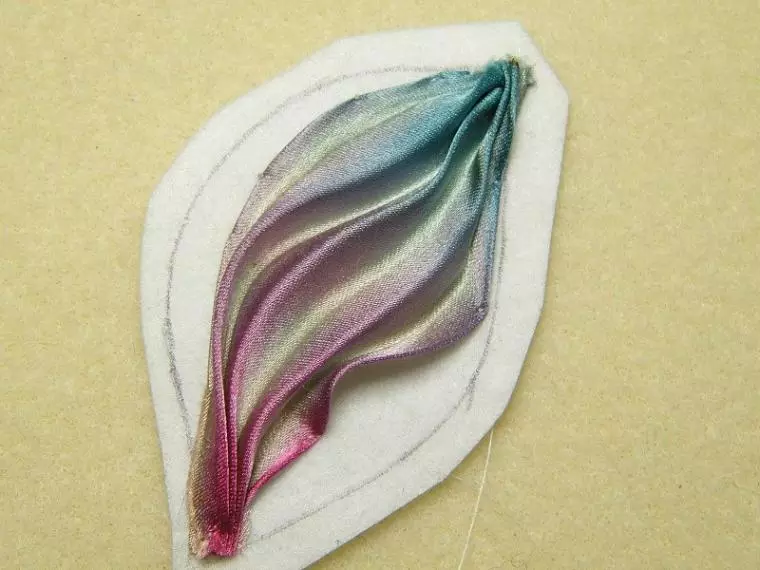
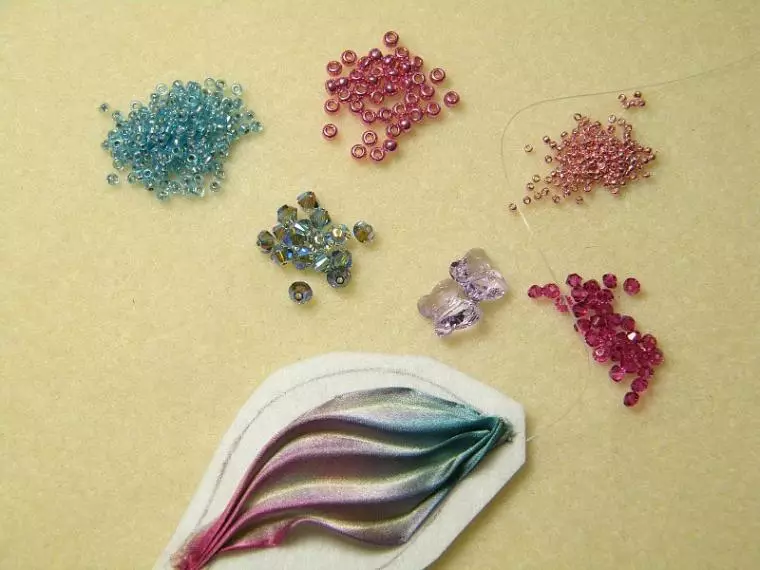
We decorate the earrings by beads or sequins. Do it the way you want.
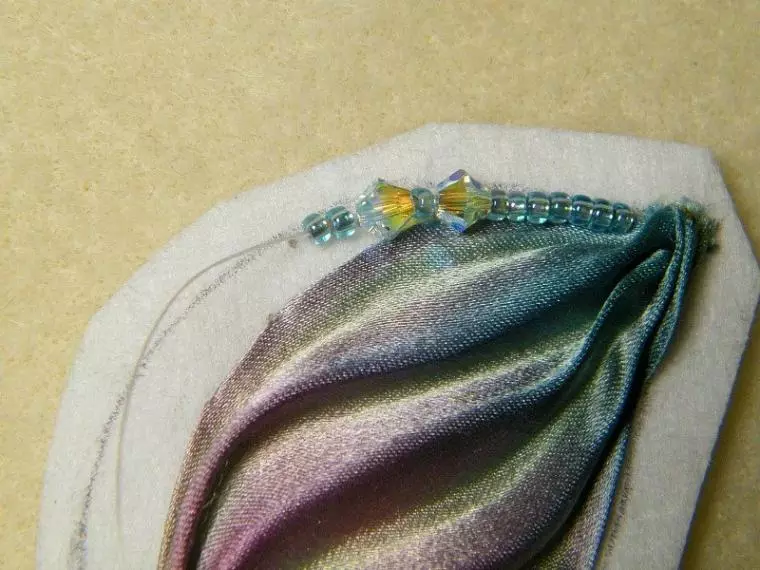
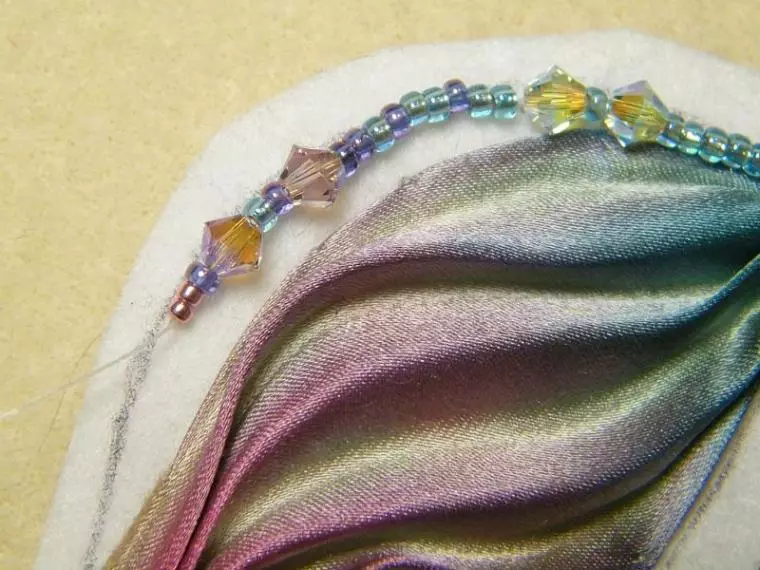
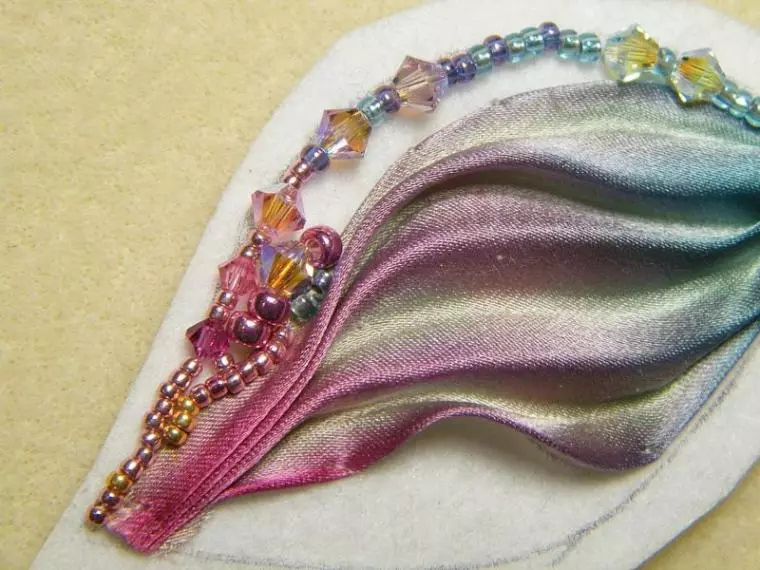
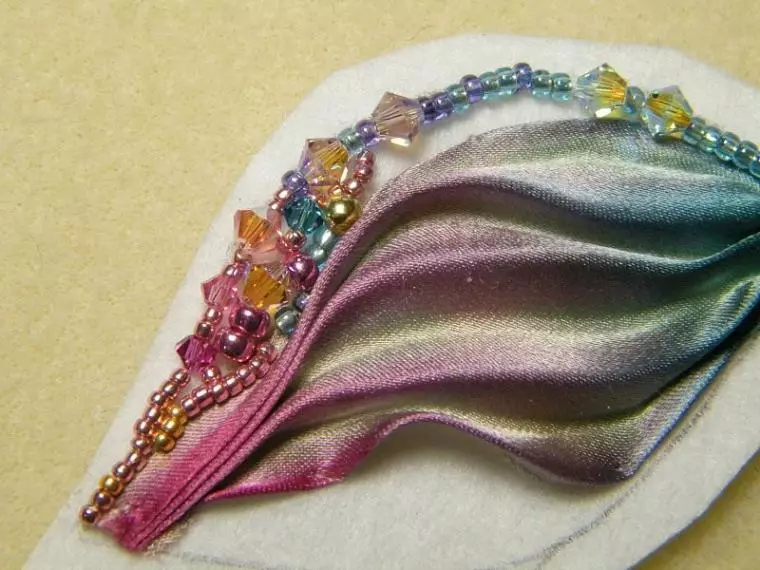
Gently cutting off the extra part of the substrate.
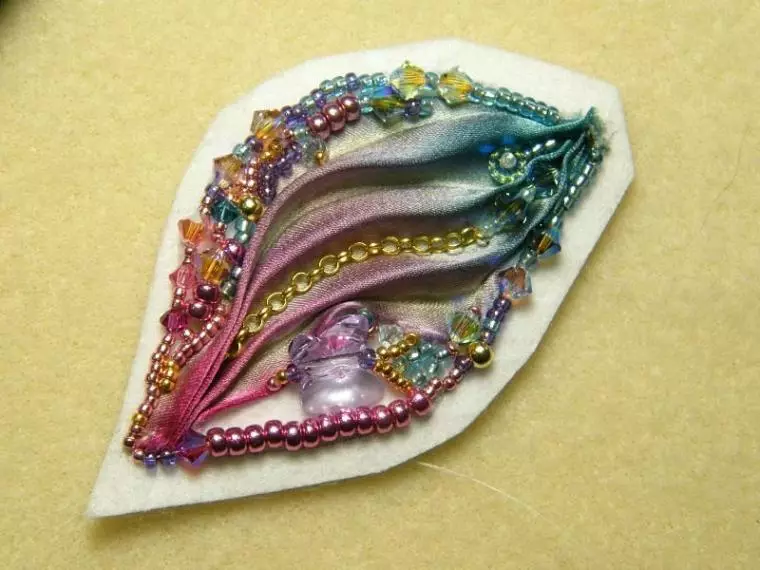
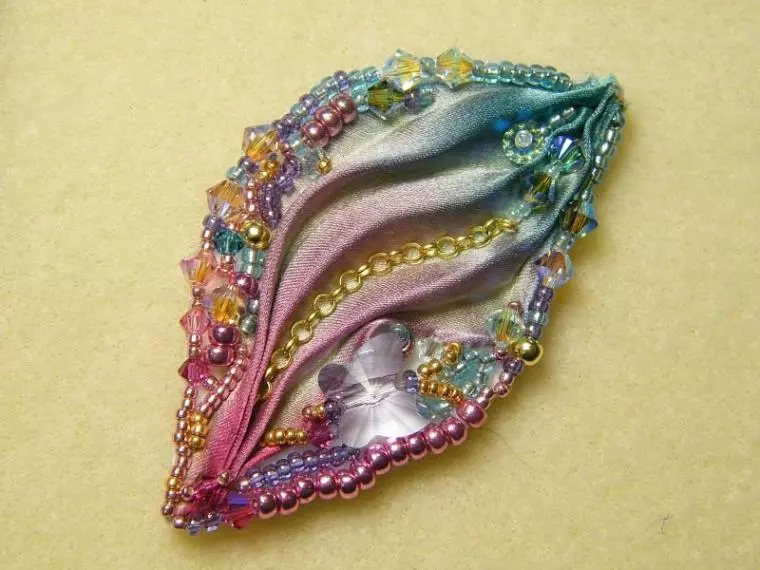
Rear surface of earrings cut out of the skin.
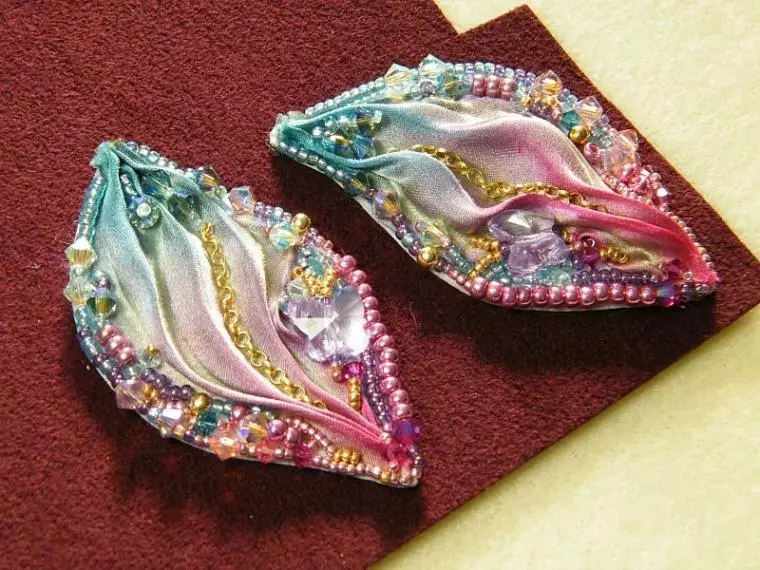
We are wearing the edge beads.
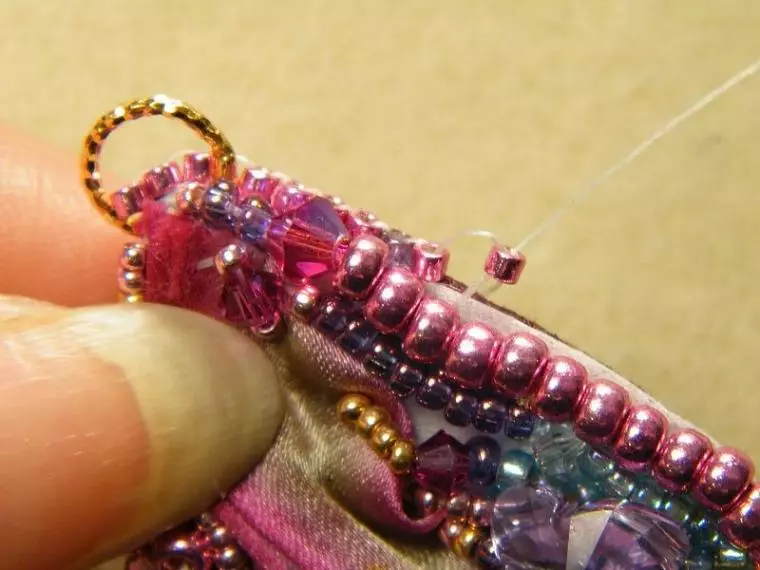
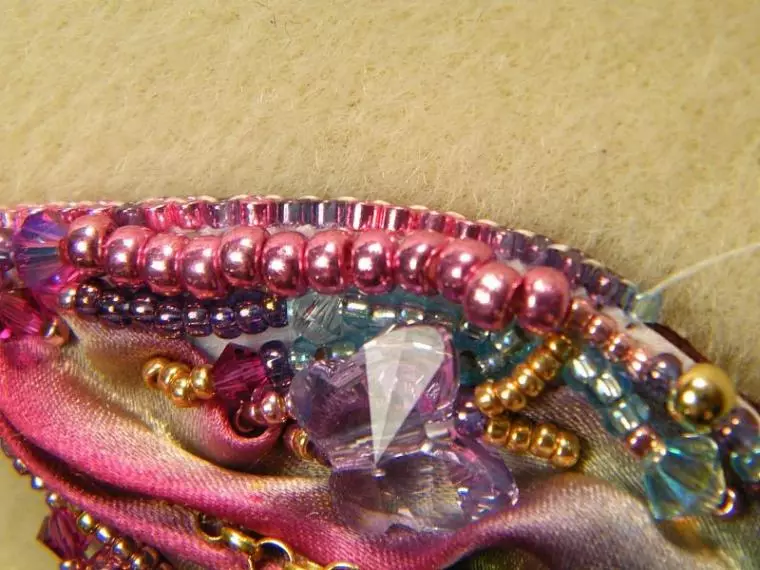
Attach clasp. And earrings are ready.
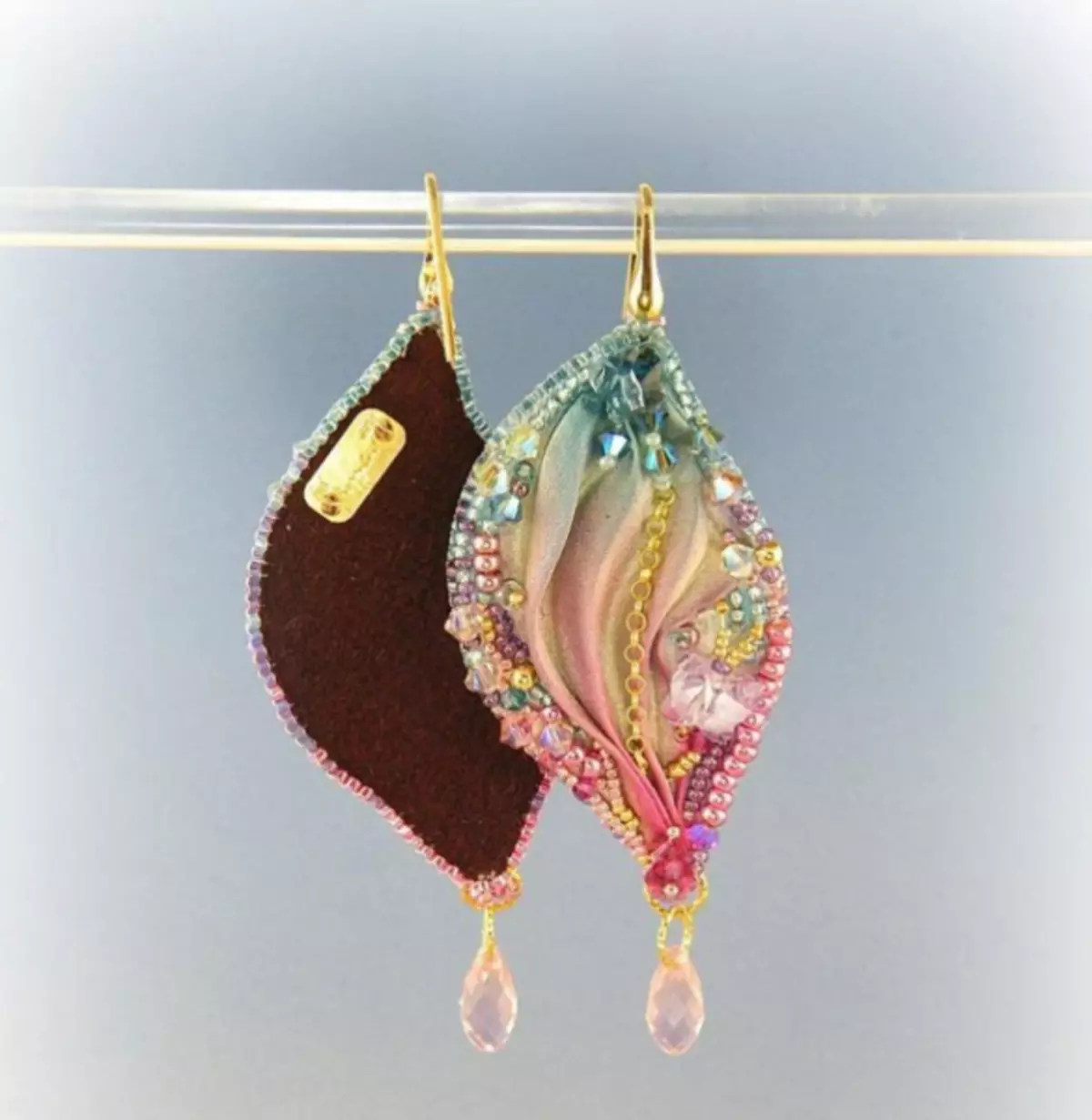
Batik in technique
To create, we need a cloth with a size of 30 * 40 cm, soft pencil, threads, dyes, calcined soda, needle and syringe for injection.
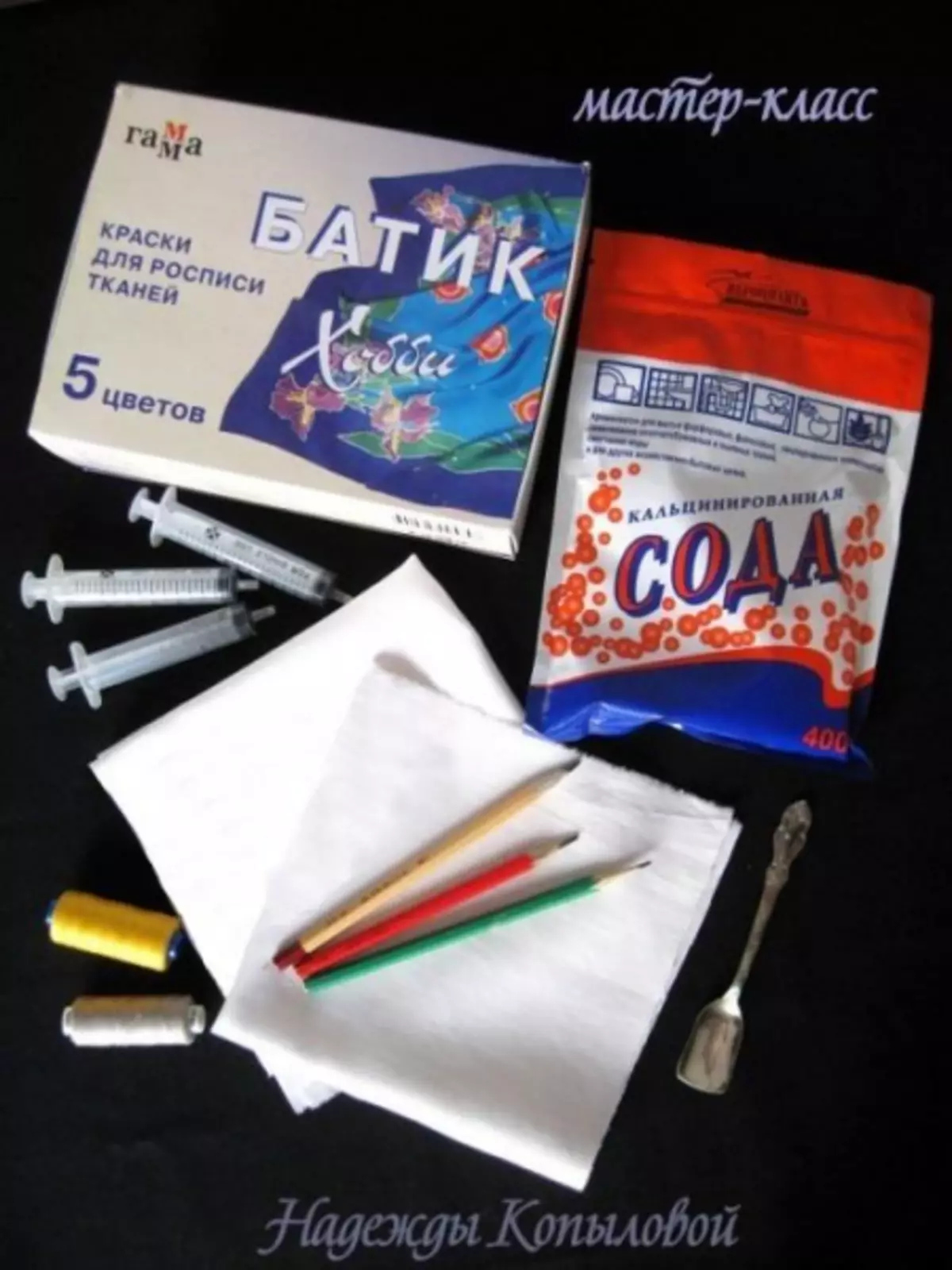
The first step is to prepare a solution of soda in hot water, the calculation for one liter of water will need ¼ part of the glass of soda. Stir the solution. Then take a piece of white cloth and draw lines on it in any order.
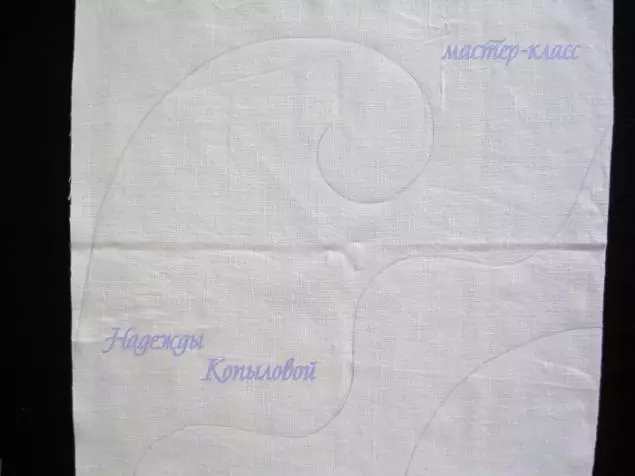
Now on the lines spend the stitches "forward needle".
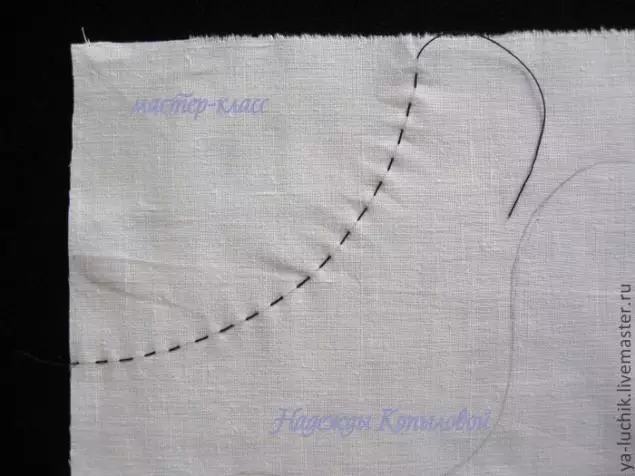
You can also collect cloth twice.
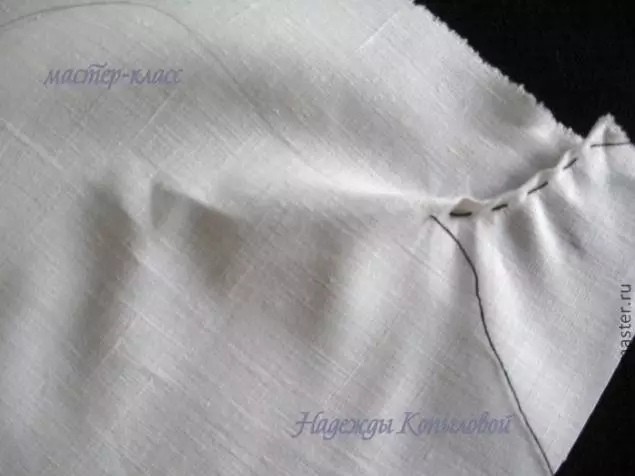
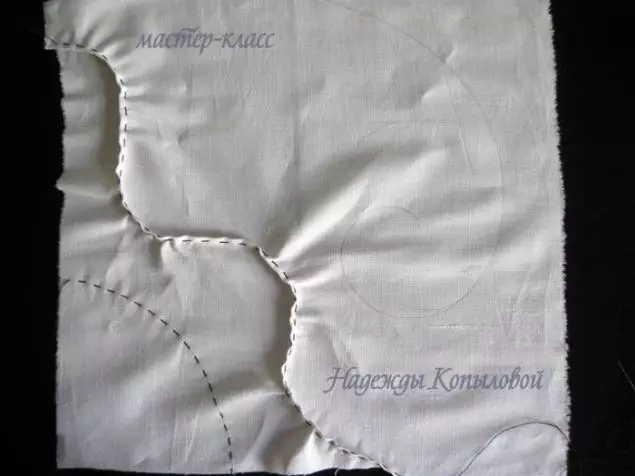
You can still use stitches called "Through the Edge".
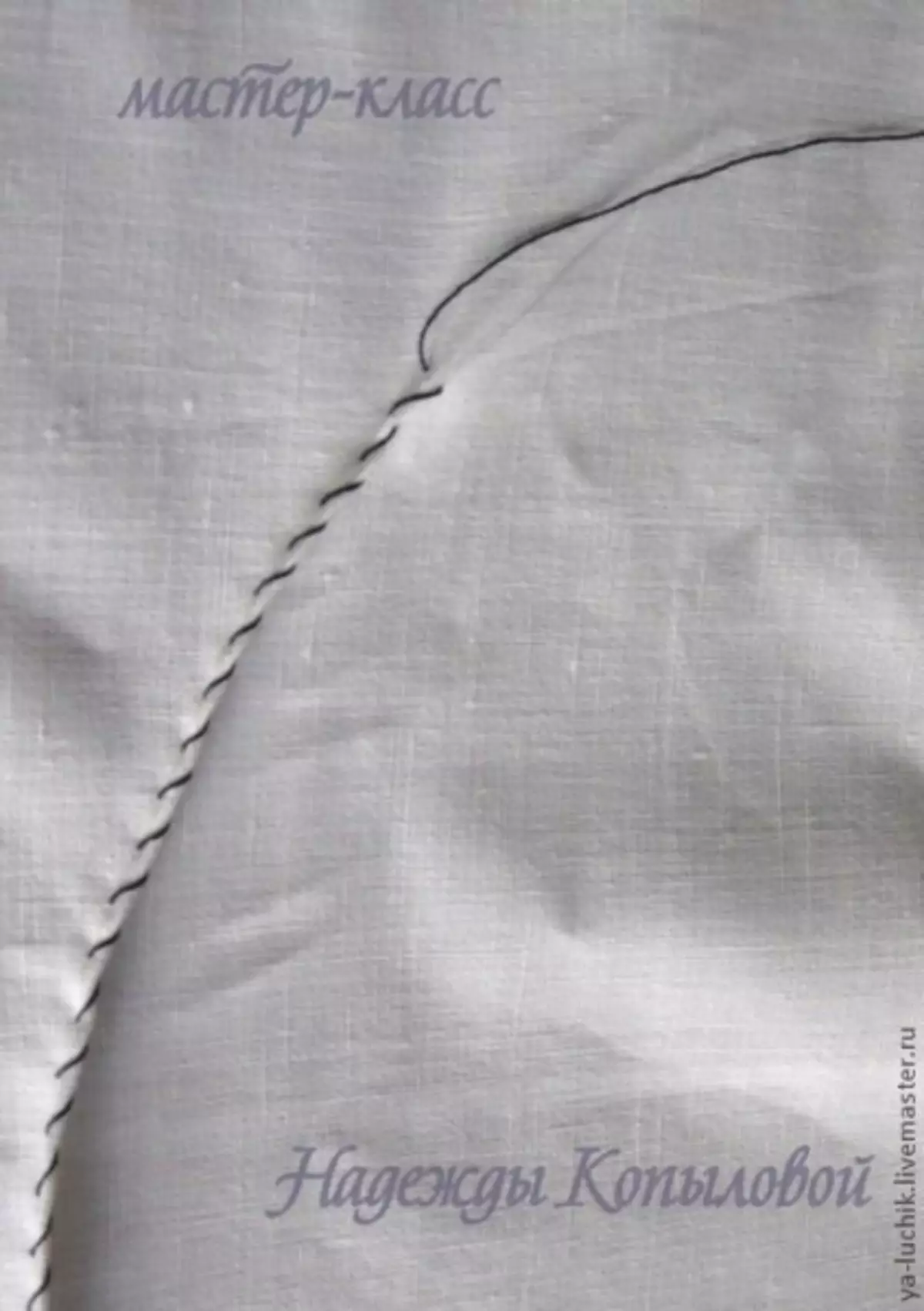
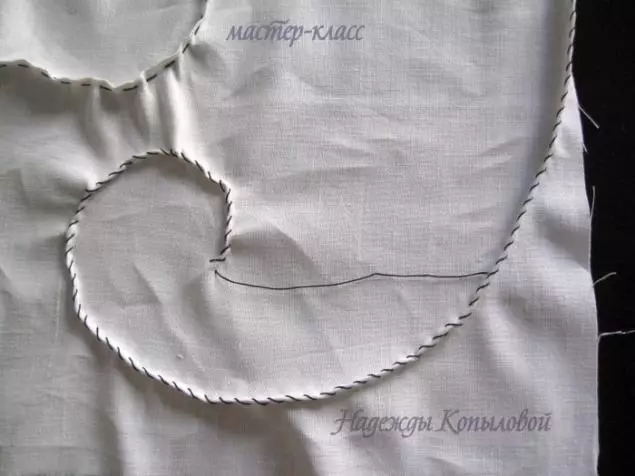
Here, what happened to us in the final result:
Article on the topic: How to tie children's slippers with crochet
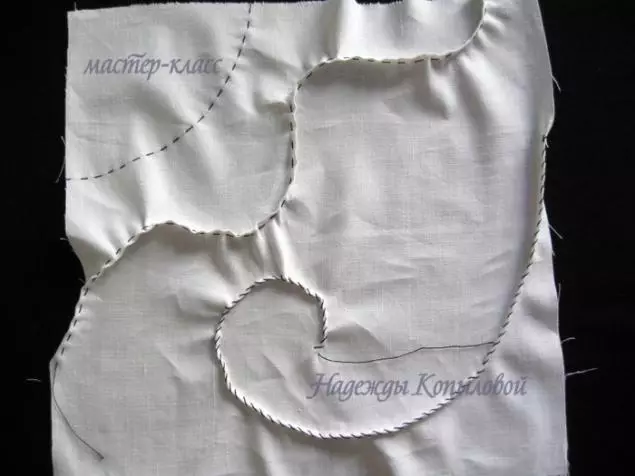
We tighten all the stitched lines. Form the nodule at the end so that the threads do not dismiss.
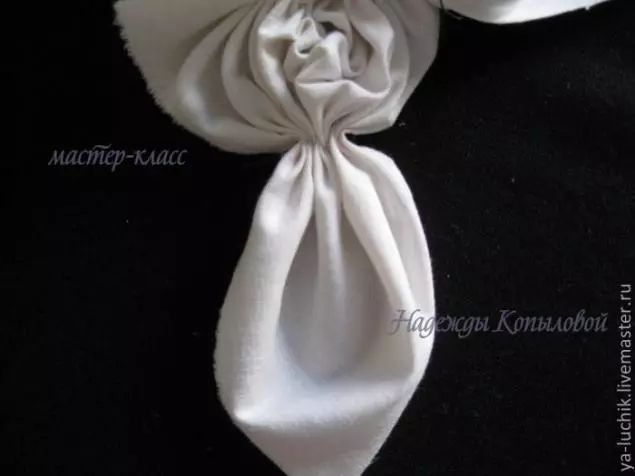
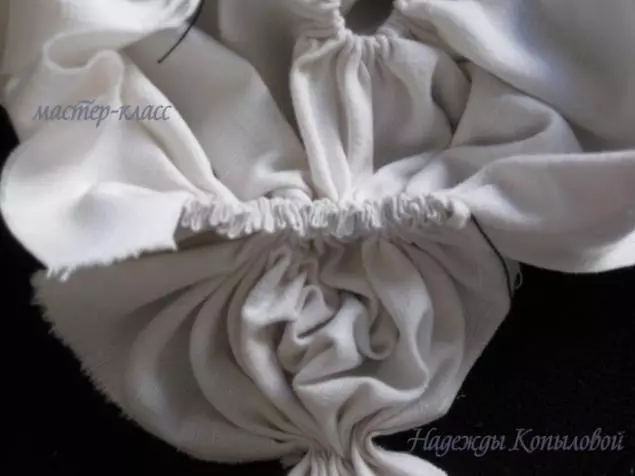
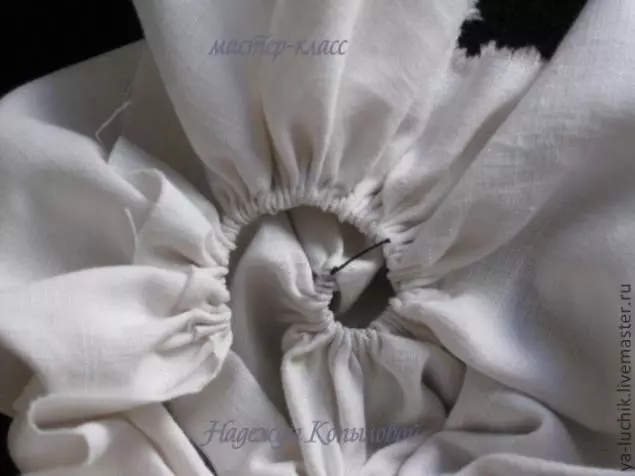
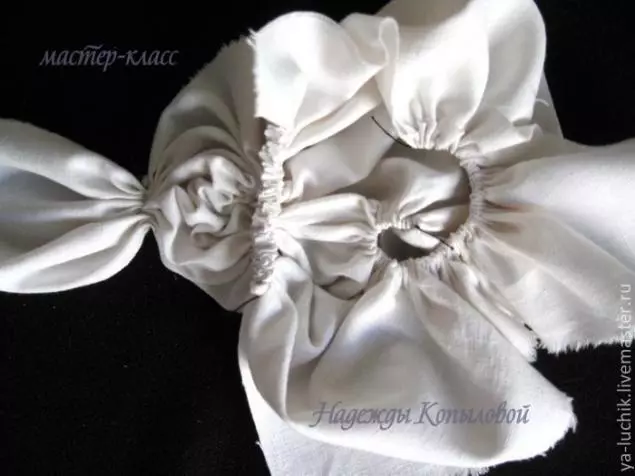
Macham fabric in the already cooked solution of water with soda calcined for twenty-five minutes.
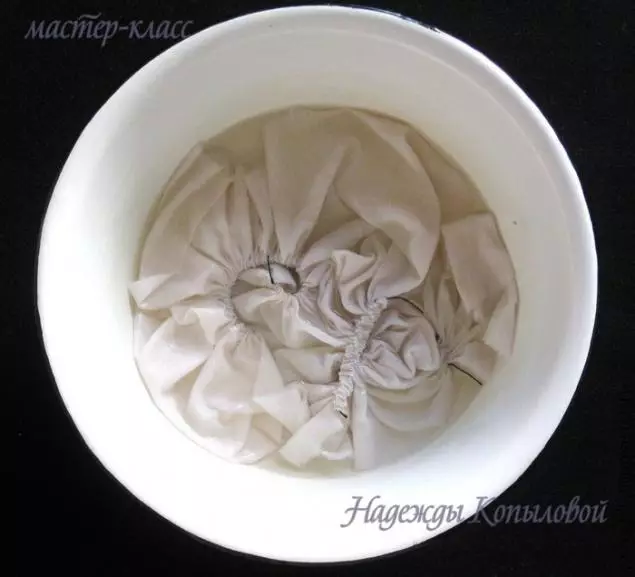
We take out the fabric and press the excess water, put it on polyethylene.
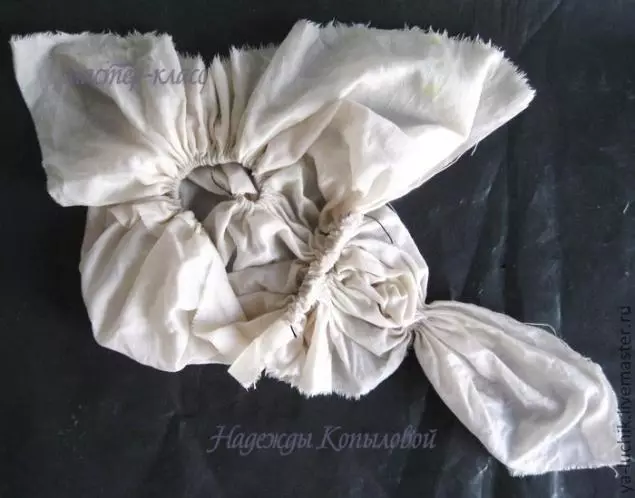
Now take the syringe and water the dye on the fabric. In this lesson, purple paint is presented, you can take any and even mix colors.
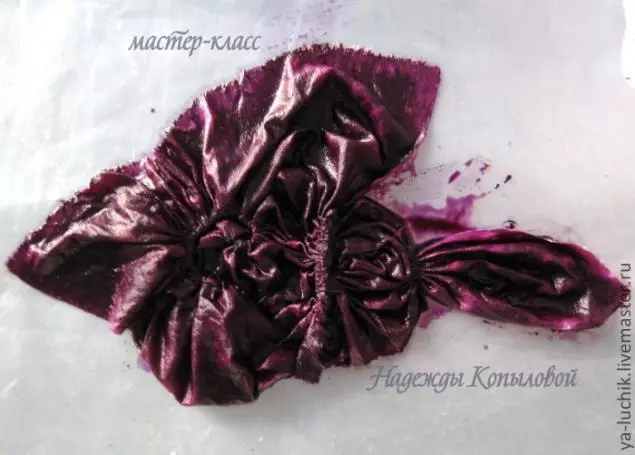
We fold the fabric into polyethylene and hide at five o'clock in a warm place.
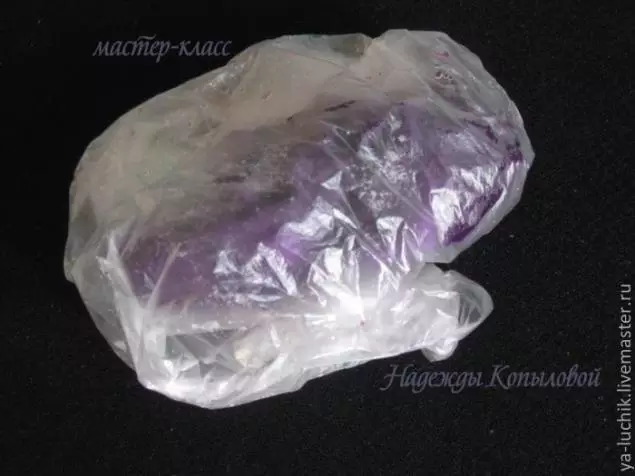
After the time passed, you need to wash the cloth in cold water, then in warm. Next, you need to pull out all the threads, you can also cut them carefully. And the last step you need to wash the resulting piece of fabric with soap.
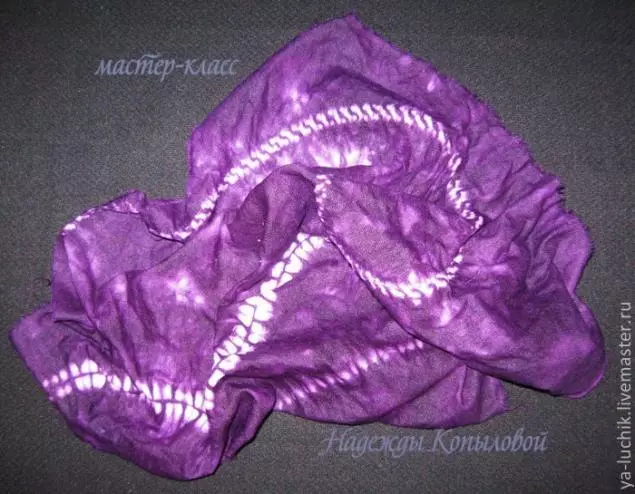
We stroke the iron, and work is considered complete.
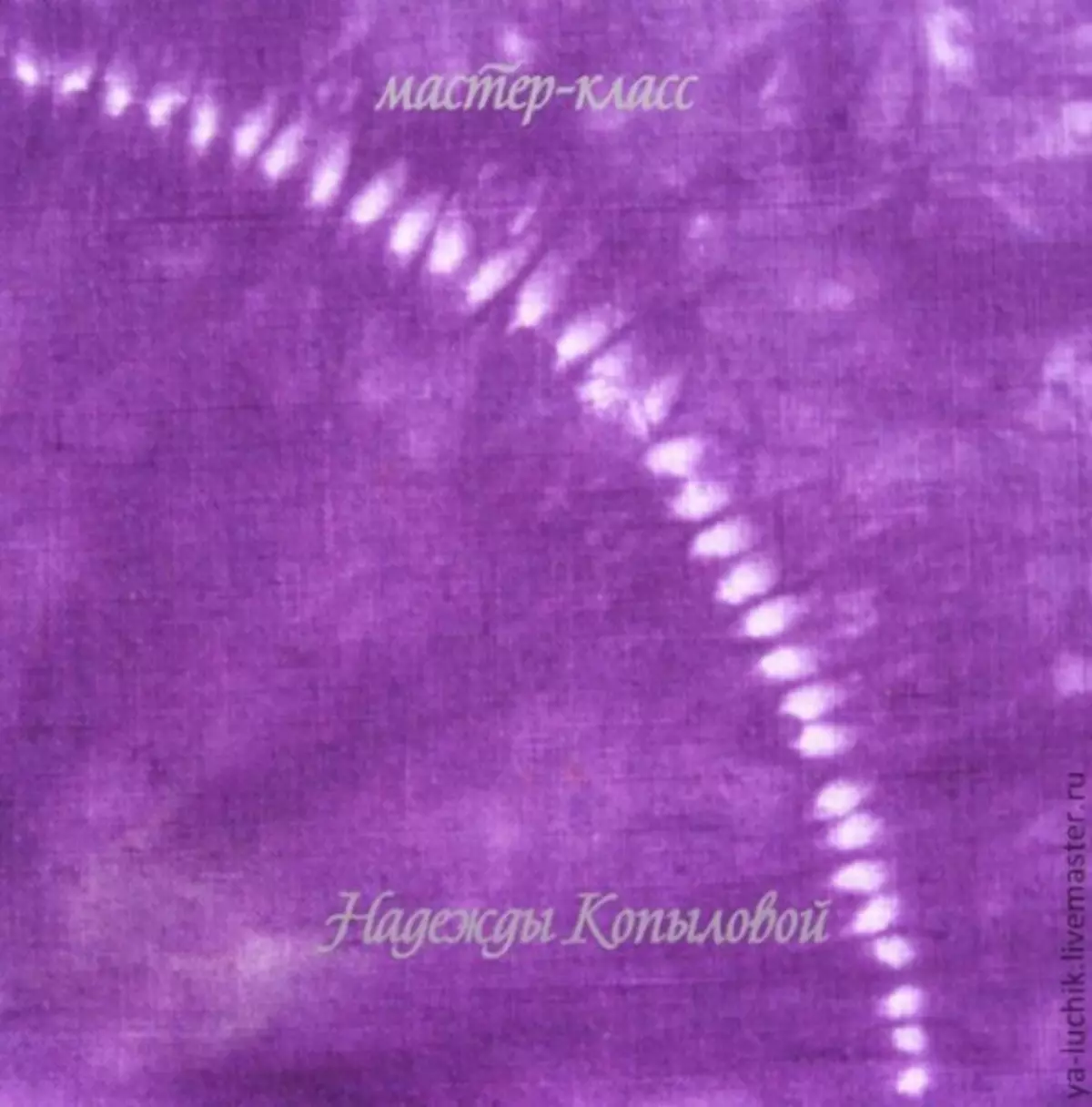

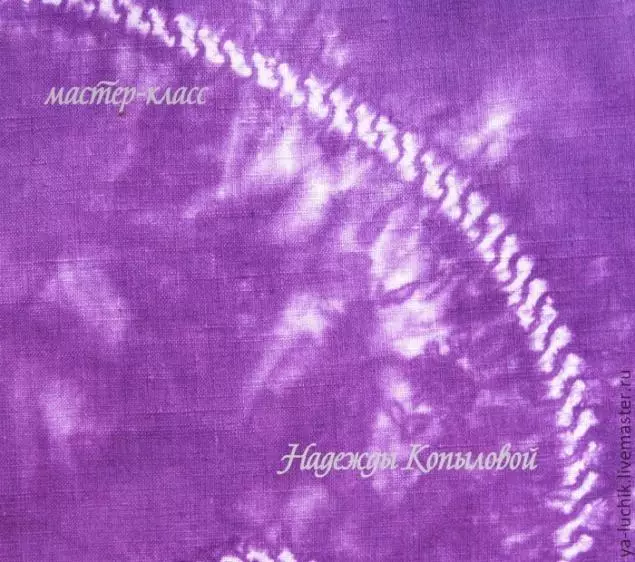
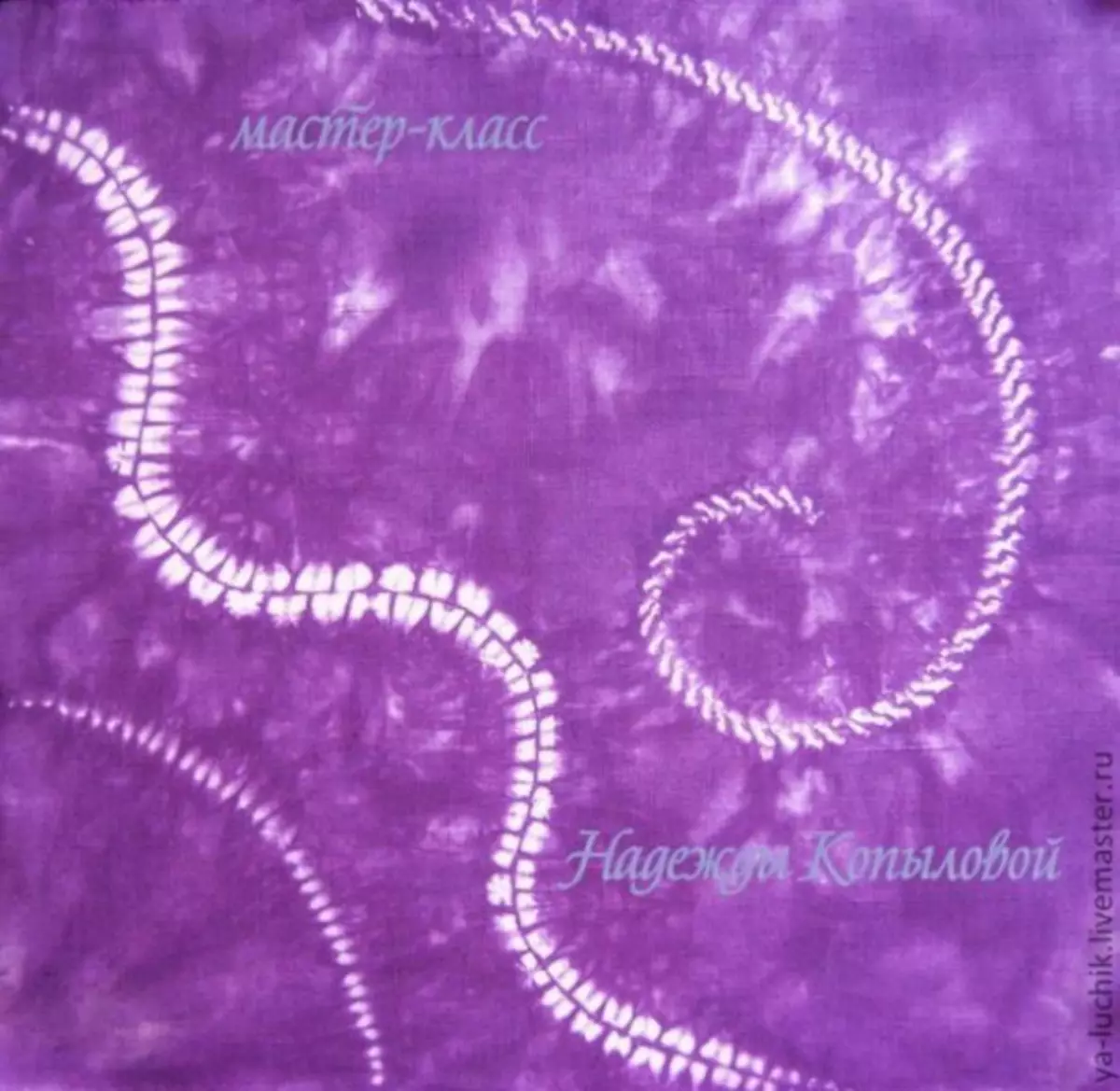
In this article we will imagine short schemes for chibori technique.
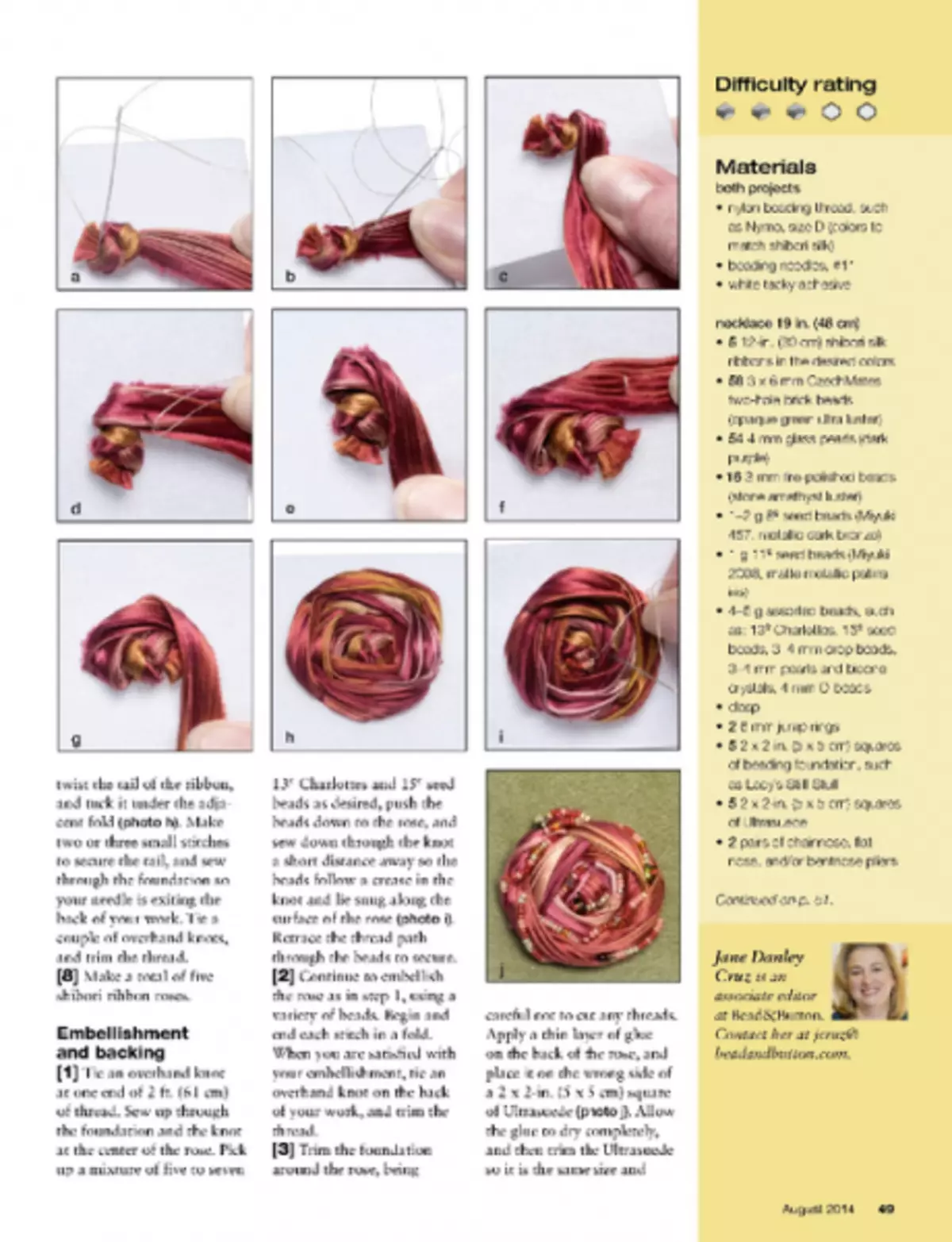
Chibori in a bath:
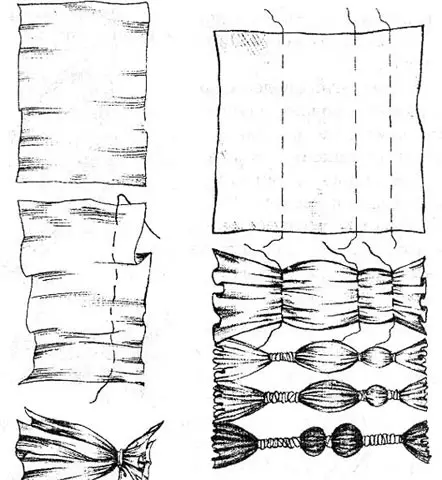
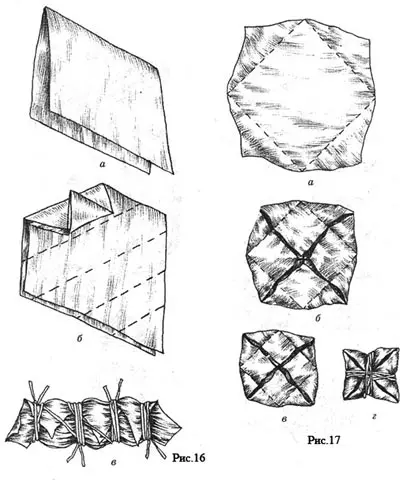
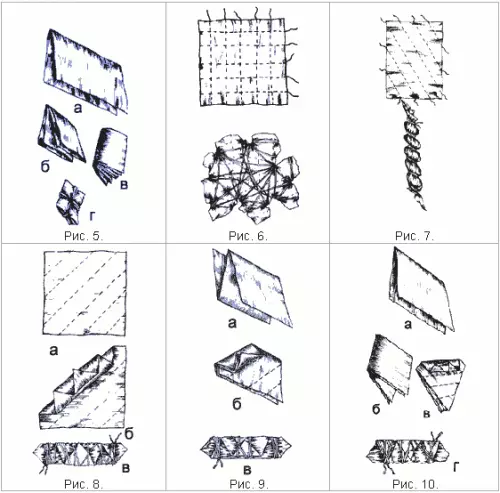
Also look at the creation of a chibori in felting. Very cool experiments are shown in the book Annette Quentin-Table "Experiment".
The process of creating a chibori in felting is completely simple. This article provides one example. We make three thin layers of the prefelt. Then the grinding machine is flowing for about three minutes. Take beads or pebbles and tie them with a rubber band in felt. We continue to accurately make a foolishness, then urine, after that we are drying the product and take out pebbles.
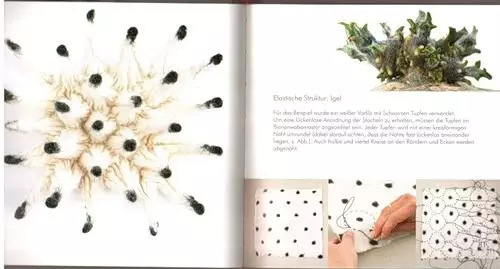
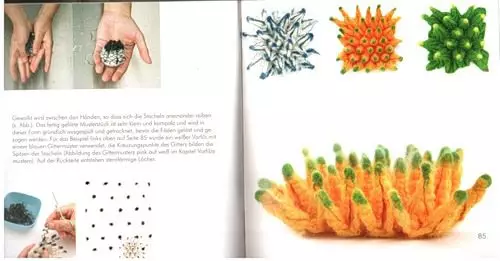
Video on the topic
We offer to see a selection of video materials for the creation of chibori technology.
